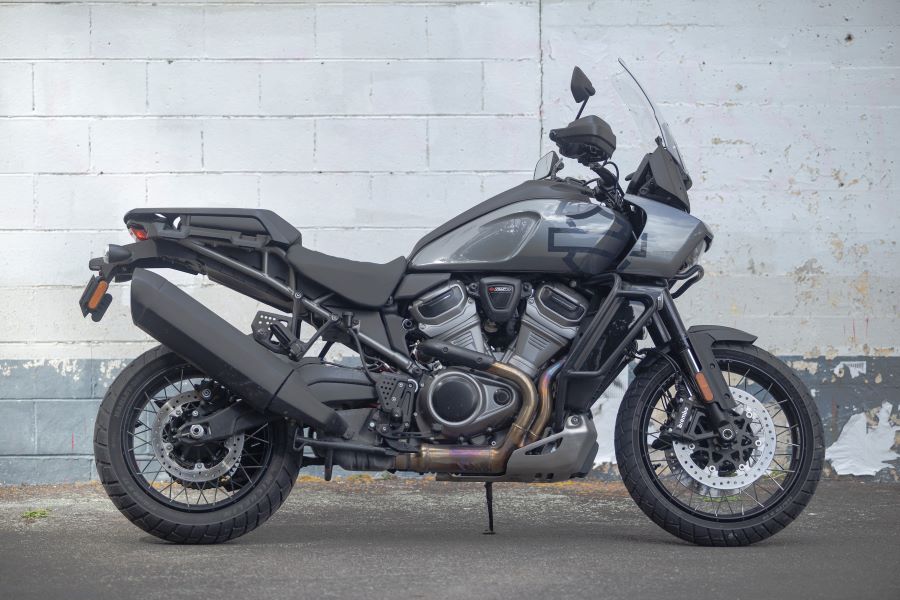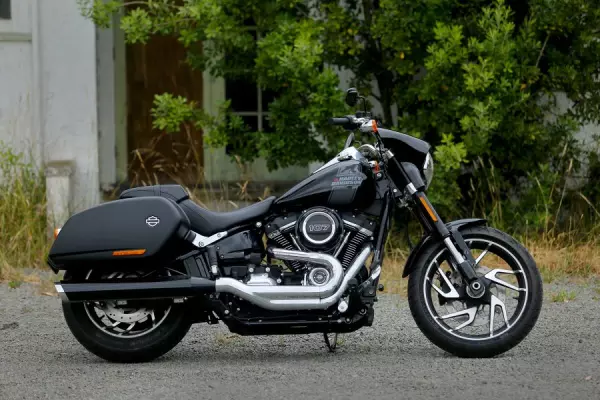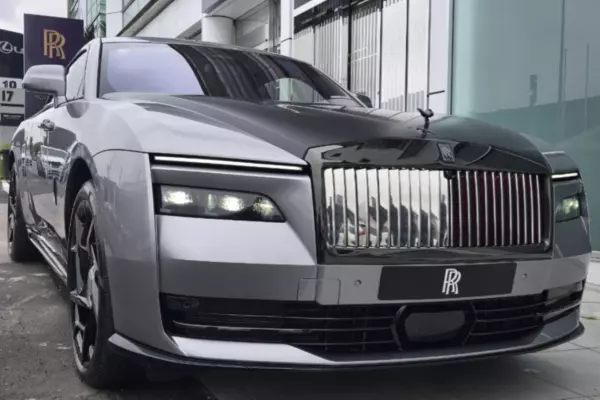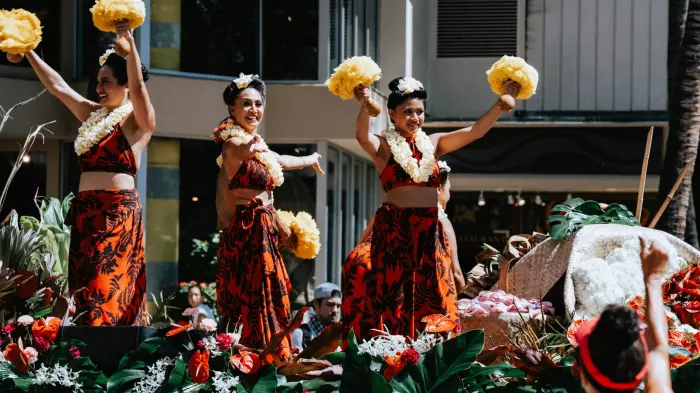First things first: this is not a Harley. Well, it is, but not as we know it. You won't look good sitting on this bike with a bandanna, chaps, and a tasselled leather jacket. You'll need solid boots, protective armour, sensible gloves, and a keen sense of adventure. Harley-Davidson have broken form and launched an adventure touring motorcycle, priced from $33,995.
So why did Harley decide to compete against the marques that have this sector sewn up? I’m thinking of the BMW GSA 1250, the KTM 1290 Super Adventure, and the Ducati Multistrada V4. According to Harley-Davidson, after a lot of research with the HD community, they reckoned there was demand for an adventure tourer. They looked at the competition and worked hard to beat it – in suspension, power, weight, and technology.
How did they do? Pretty damn well.
Powered by the all-new Revolution Max 1250 engine, the Pan America delivers 150 horsepower, with plenty of torque to spare. It’s got a double-overhead cam (DOHC), and independent Variable Valve Timing (VVT). This doesn’t mean much to me, but those of you who understand this stuff will know that it’ll deliver “as much low-end acceleration off the line, and high-RPM horsepower you can twist”. So it said on the tin, and so it was. It had plenty of power under acceleration, and unlike other Harleys, it revved high and loved it – 4000 revs per minute at the speed limit in sixth gear.
Technologically, it has all the bells and whistles. Rider modes for every situation, eight in total. Four are pre-baked: Sport, Road, Rain, and Off-road. Off-road Plus lets you tweak a few settings, then there are three custom modes that let you have complete control over power output, throttle response, engine braking, traction control, ABS, and suspension damping. Despite all of this adjustability, it rides well straight out of the box. Rider modes can be changed on the move, as long as the throttle is disengaged.
 The Pan America 1250 Special features auto height adjustment. Photo: Alan Doak.
The Pan America 1250 Special features auto height adjustment. Photo: Alan Doak.
The most touted feature is the Adaptive Ride Height (ARH). Often, the complaint with adventure-style motorcycles is their height, making it difficult for vertically challenged riders to reach the ground when the bike is stationary. With ARH, the suspension lowers, almost imperceptibly, by up to 5cm when you come to a stop, and then lifts up when you move off. It’s a nifty feature available only on the Pan America Special.
Ergonomically, the Pan America is a very comfortable ride. The bars are wide, the seat is accommodating, and the seating position is upright and relaxed. At 285kg, it’s light for a Harley, and comparable to its competition. Remember, Harley-Davidson are well known for building some of the heaviest bikes on the market, so getting the weight down was their biggest challenge. Some of this is achieved by incorporating the engine into the frame, thereby removing a lot of steel and weight and at the same time producing a rigidity that will suit aggressive off-road riders.
Up front, there are plenty of controls to wrap your gloves around. The left-hand cluster is crowded with buttons, including cruise control, heated grip control, selector buttons for the 17cm TFT (thin-film-transistor) display, high-beam and turn signals. I found it tricky to operate in the dark, but familiarity increased over time. The TFT is jam-packed with information, so much so that the small font is difficult to read.
Turn-by-turn navigation can be achieved by downloading the Harley-Davidson app to your phone and then connecting to the TFT display via Bluetooth. It was a frustrating experience. The app would not reroute when I rode off course, and most of the time when I was able to connect to the display, my location would remain stationary. Including a GPS in the display would have made more sense to me, eliminating any connectivity issues or the need to keep your phone charged.
Then there are the lights. Just looking at the photos of the Pan America made me suspicious of how they’d perform. Visually, they have such a narrow profile that I couldn’t see how the main Daymaker headlight would be effective. My suspicions were well founded. I’m that rare breed of motorcyclist that loves riding in the depths of the night. As I returned to Wellington from Hawke’s Bay late one Sunday, via the Pahiatua Track, the lights disappointed me. Riding aggressively and braking hard into corners, I found the front suspension would dip and I’d lose visibility beyond 30 metres.
The Advanced Daymaker Adaptive Headlamp that sits above the headlight illuminates the sides of the road depending on your lean angle. The harder the lean, the more illumination. If you are riding in a straight line, it’s off. It’s a nice idea, but I found it more distracting than useful. I’d just love to have good lighting all the time, not under specific conditions. You can buy auxiliary spots, but as the Special is the top of the range, I would have expected these as standard.
Overall impressions? When I collected the bike from the dealer in Wellington, the staff told me they had sold five already, all of them to Harley riders. And that’s the thing. Is there enough interest or trust in the Harley-Davidson brand for the BMW or KTM riders to make the switch? The way the Pan America handled, it deserves to be seen next to the other adventure tourers.
After two weeks and 1500km of riding, I was sad to give the bike back. It’s very easy and fun to ride, around town, on the highway, and on those twisty secondary roads that lace across New Zealand. It’s the sort of bike, despite its size and power, that you could easily take down to the shops to buy a bottle of milk and return in a few days’ time, having ridden the length of the country.
harley-davidson.com/nz
Read more from Alan at thinman.co.nz











